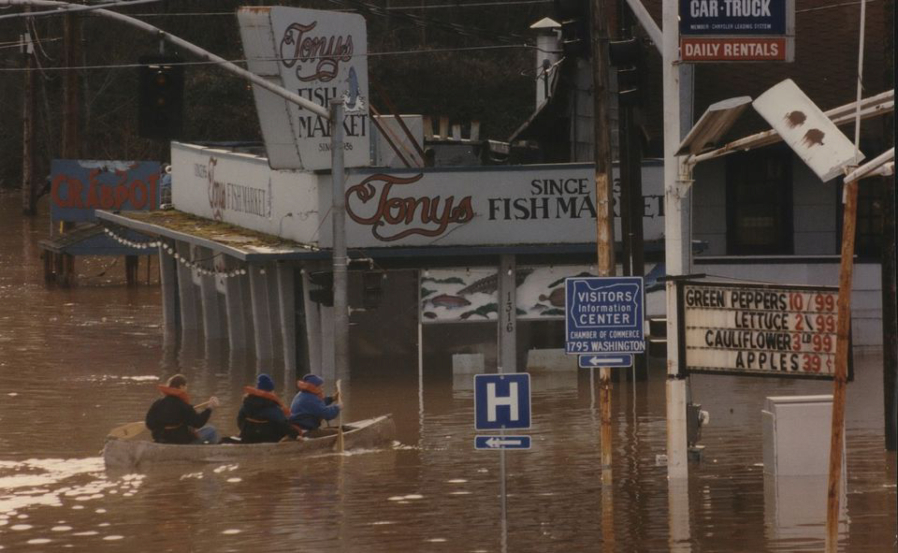“Don’t go outside if you don’t have to.”
If you were in Portland and channel-surfing from your couch 25 years ago this week, that’s the message you heard over and over from local TV reporters.
It was good advice. The roads were slick, with highways transformed into “parking lots [with] jack-knifed tractor-trailers.” The sidewalks were just as perilous, even if you “tromped around in golf shoes.”
By this point in the long winter of 1995-96, few Portlanders needed to be told to stay at home. They’d endured two months of unusually cold temperatures and winter storms, starting with a deadly “Big Blow” in December. A snowstorm during the last week of January had knocked out power for thousands of Portland General Electric customers.
Some retailers complained that the endless weather warnings, from special reports on TV to front-page banner headlines in newspapers, were just too much.
“I think the business community deserves better from television coverage,” one restaurant owner told a reporter. “Should I have lost 30% of my business? You bet. Should I have lost 65%? No.”
The saturation news coverage might have been overkill, but at the same time the dangers couldn’t be denied. The commute on Monday, Feb. 5, 1996, resulted in “an epidemic of bruises, sprains and fractures” — including concussions and broken hips — being treated in area emergency rooms.
Many of those accidents came from people trying to navigate the sidewalks, but the situation wasn’t much better for those in cars. Mother Nature had lifted a weeklong deep freeze, and as a result, rain and ice-melt combined to cause serious trouble on the roads. Dozens of accidents were reported on Interstate 84 near Hood River and on roads throughout Hood River County. (“It’s extremely nasty,” an Oregon State Police dispatcher said of the conditions there.) Over in Salem, a highway became a bumper-car track — and then the scene of a 22-car pileup — as vehicles lost control on a “slant” in the road, sliding into each other and spinning away.
Flooding swamped roads in a swath of suburbs, including Tigard, Tualatin, Hillsboro and Cornelius. City workers in Banks pried the lids off manholes so that storm waters would flow down streets instead of bubbling up into houses through sewer systems.
Sheriff’s deputies in Corvallis, Ore., rode boats through city streets.
The flood waters only got worse in the days that followed — a lot worse. The heavy rain kicked loose a torrent of mountain snow, causing rivers to jump their banks. In downtown Portland, the Willamette reached the very top of the harbor wall. Raging flood waters pounded Vernonia, Clatskanie and other towns. About a dozen people died from the onslaught.
“Throughout the week of Feb. 4, 1996, the Northwest was slapped hard,” The Oregonian wrote under the headline “The Great Flood.”
Volunteers around the region braved the elements to haul sandbags, shovel debris — and rescue neighbors trapped in their homes or cars.
The flooding would prove to be Oregon’s worst in three decades. Twenty-six rivers in the state reached flood stage — with four of them hitting record heights.
After weeks that brought winds and then snow and then ice and then rain and then floods, many Portlanders surely just wanted to get out of town to a sunnier clime — any sunnier clime. But that wasn’t necessarily such a good idea either.
On the first Sunday in February, a Delta Airlines jetliner, headed for Atlanta, slid off a runway at Portland International Airport, shuddering to a stop in an icy patch of grass. Screams echoed through the plane as the Boeing 757 bounced and slid, but no one was injured.
A shuttle bus took the 79 passengers back to the terminal, where they had to wait through the night for another chance to escape the Northwest winter.



